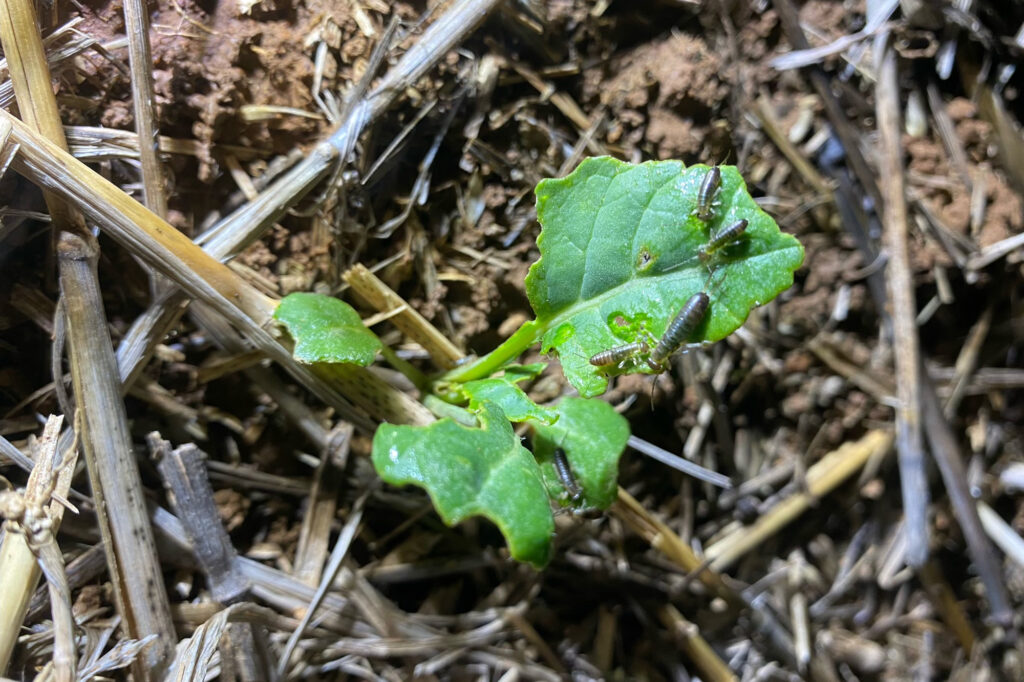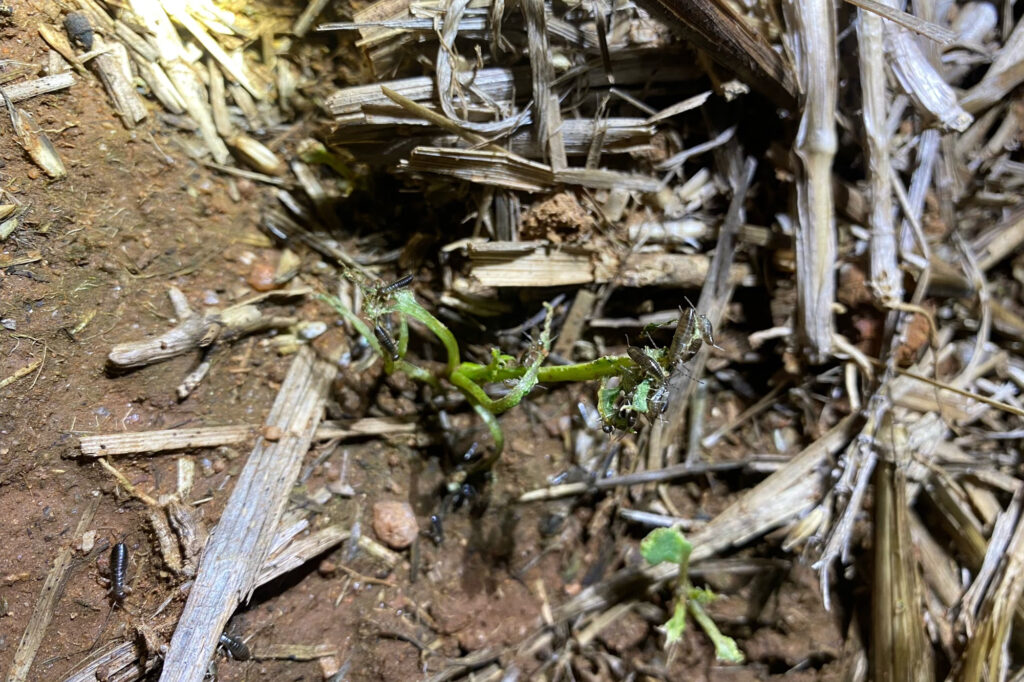During canola establishment it can be bewildering to come across areas of heavily chewed young foliage, or plants eaten right down to the ground or missing entirely, with no pests in sight.
One reason you might have trouble pinpointing the culprits is that many establishment pests are mostly active at night.
If this is your predicament, here are some pointers for digging, trapping and visual searches to find out which pests are causing you problems.
Digging to unearth the pests
It is useful to dig up some soil around area of damaged plants to search for potential canola pests. For example, cutworm larvae and vegetable weevil larvae are often found curled up beneath the soil or stubble surface near plants during the day.
It can also be helpful to turn over natural refuges like rocks or large soil clods and agitate stubble where pests can be sheltering. This is a good way to find nests of the European earwig as they are often patchily distributed and found under soil clods, rocks and debris.
Trapping and baiting
Shelter traps are useful for identifying some pests that are active at night such as slaters and millipedes. The shelter provides a cool, moist and dark environment which creates a good place for insects and other invertebrates to congregate. The shelter could be a tile or a wet hessian mat that is at least 30 x 30 cm in size placed directly on the soil surface and checked underneath after a day or two.
Shelter traps can also be used to monitor the grey field slug, however these traps are most effective when the soil is wet. In contrast, the black field slug won’t often use shelter traps; this species can be monitored by putting out strips of bait and checking the morning after for dead slugs.
Another type of shelter trap is rolled up pieces of corrugated cardboard placed in the field which can be used to trap the European earwig.
But does the shoe fit?
One downside to digging up and trapping potential suspects is that it can sometimes lead to attributing the damage to the wrong critter.
It isn’t always the species found in the vicinity of the damage that is the cause. For example, if you’re finding above ground foliar damage, alongside lots of wireworm larvae in the ground nearby, they are unlikely to be the cause as they don’t feed above ground.
Also, it isn’t always the most numerous species that is the cause. It isn’t uncommon in stubble-retained paddocks to have large numbers of slaters and millipedes build up without causing significant crop loss.
If you believe a particular species is feeding on canola plants, it is important to check if the damage fits the profile of the suspect critter e.g. host range, feeding symptoms.
Catch them red-handed if you can
If practical, direct searching at night with a torch may be necessary to identify the source of damage. This can be particularly useful if there are multiple suspects in a paddock, but you are unsure what is doing the damage.
For example, a night-time check on some young canola recently revealed huge numbers of adult and juvenile Europeans earwigs feeding and causing extensive damage in Victoria’s Northern Country.


Why correct identification is so important
When canola plants are being decimated it important to correctly identify what is behind it to get the best management outcome.
For example, it isn’t always straight forward to tell insect damage and slug damage apart, particularly if entire plants are missing. If it is slugs that are causing the damage, molluscicide baits are needed, and proactive planning to protect the following year’s crops may be required in the slug-affected paddocks.
Many canola pests such as earwigs, slaters and millipedes, are protected by heavy stubble loads, which means that insecticide sprays cannot reach them and not recommended for their control. Correct identification of these species can prevent ineffective spray applications.
By identifying the correct cause of damage, it also provides the opportunity to choose insecticide options with fewer negative effects on beneficial insects, if spraying is needed.
Acknowledgments
Thanks to Greg Toomey (Nutrien Ag) for field observations.
Cover image: Slug damage in emerging canola. Photo by Julia Severi





